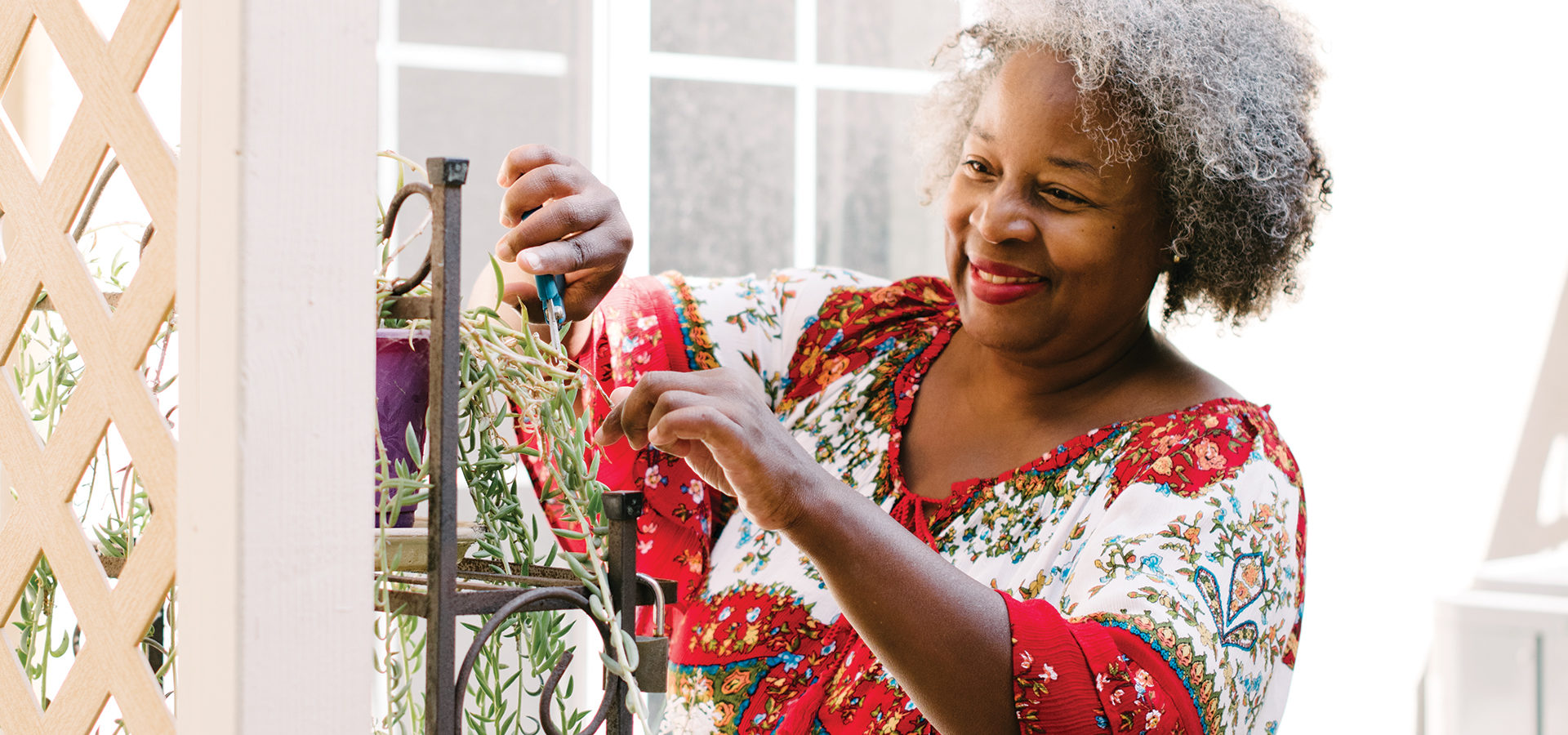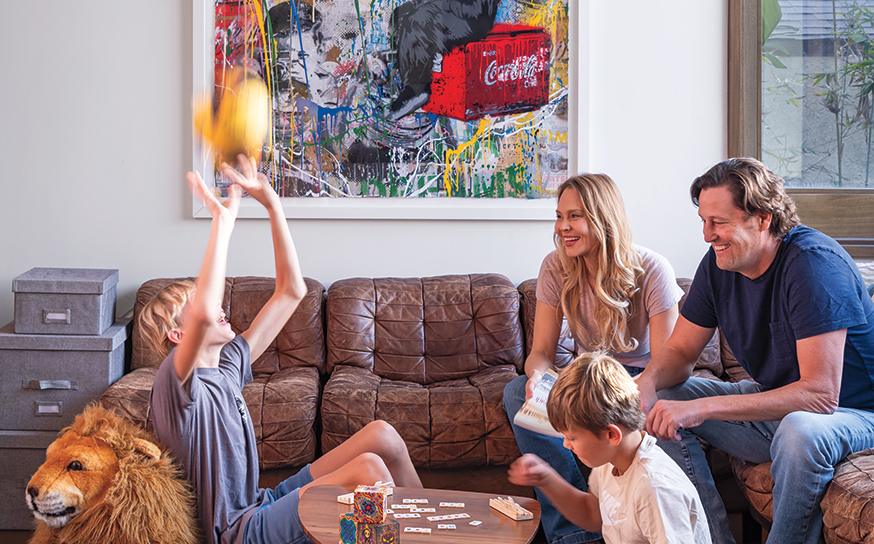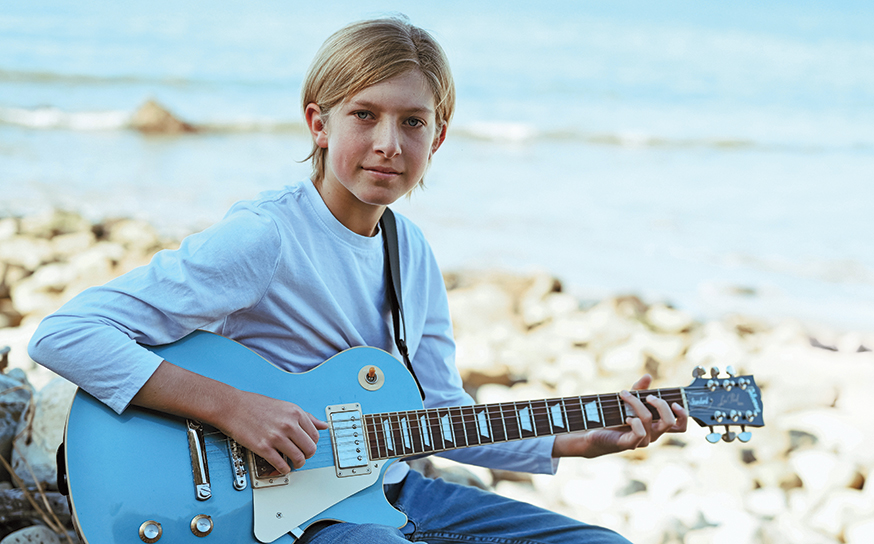After years of living with severe migraines—some of which would result in trips to the emergency room—functioning with pain had become a new normal for Sage Marshall. If it weren’t for a scheduled eye appointment, she likely would have stayed home the day of her stroke despite the back pain and headaches she’d been experiencing that week in February 2014. During her eye appointment, bleeding was discovered behind her retina. But it was her blood pressure that raised the greatest concern.
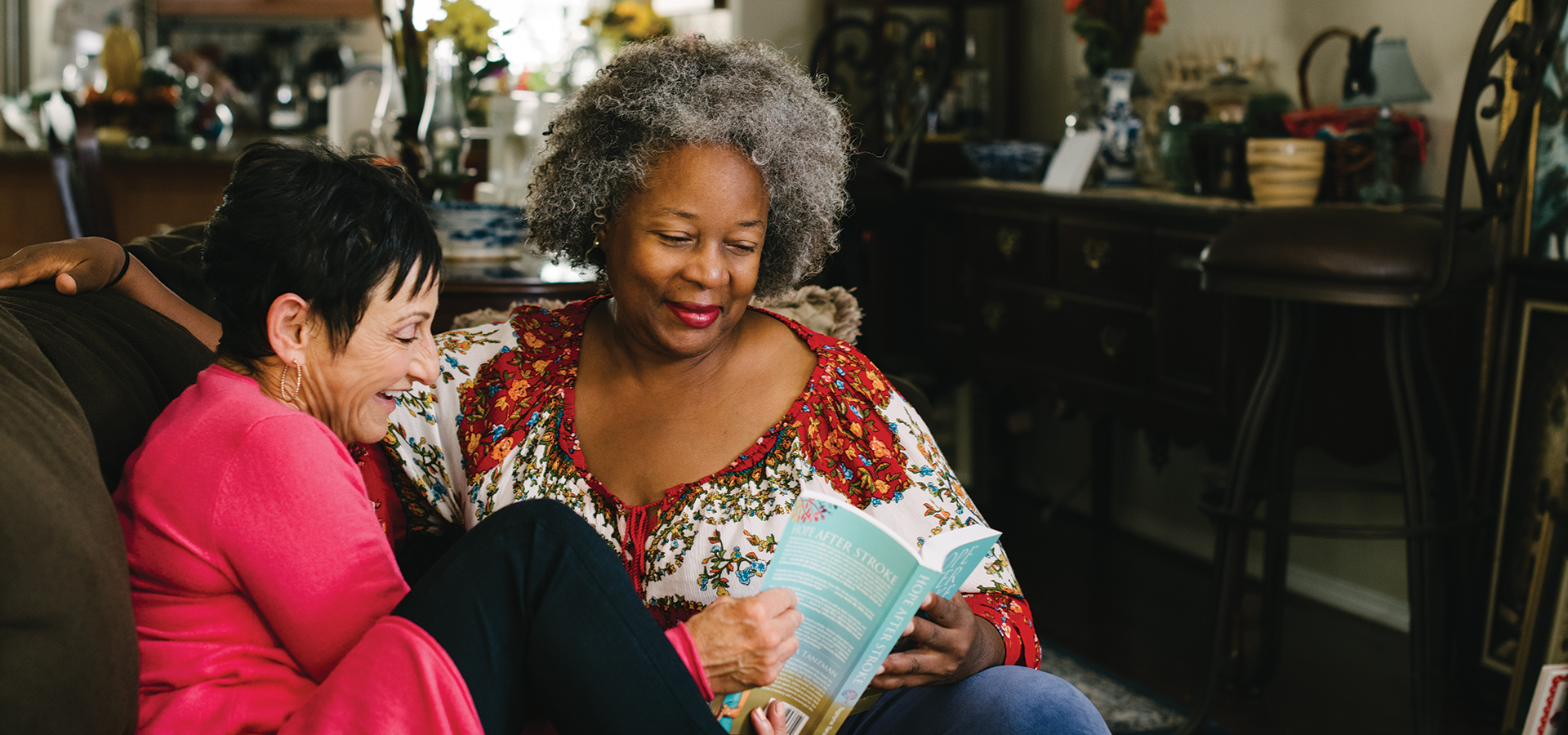
“[They] kept taking my blood pressure and saying something wasn’t right because is was 250 over 100,” Sage explains. The paramedics were called, and Sage was immediately taken to the hospital. While her blood pressure was taken over and over again in the emergency room, Sage’s mind wandered … thinking of the things she needed to do once she got home. The severity of her situation diminished by the never-ending to-do list of a mother and wife—despite the worried looks of those around her.
A blood test revealed her kidneys were functioning at 4%—news that came as a total shock to Sage. And then, while still at the hospital, she had a stroke. When she awoke, she was paralyzed and disoriented. “I would try to get out of bed and fall on the floor,” she notes.
A person was assigned to her room to keep Sage from attempting to stand, but eventually for her own safety she was restrained to her bed. Sage had no time to absorb the news of her kidney failure before suffering a stroke that left her paralyzed on one side of her body, impaired her speech and cognition and even her ability to eat. “The frustration was just enormous,” she explains.
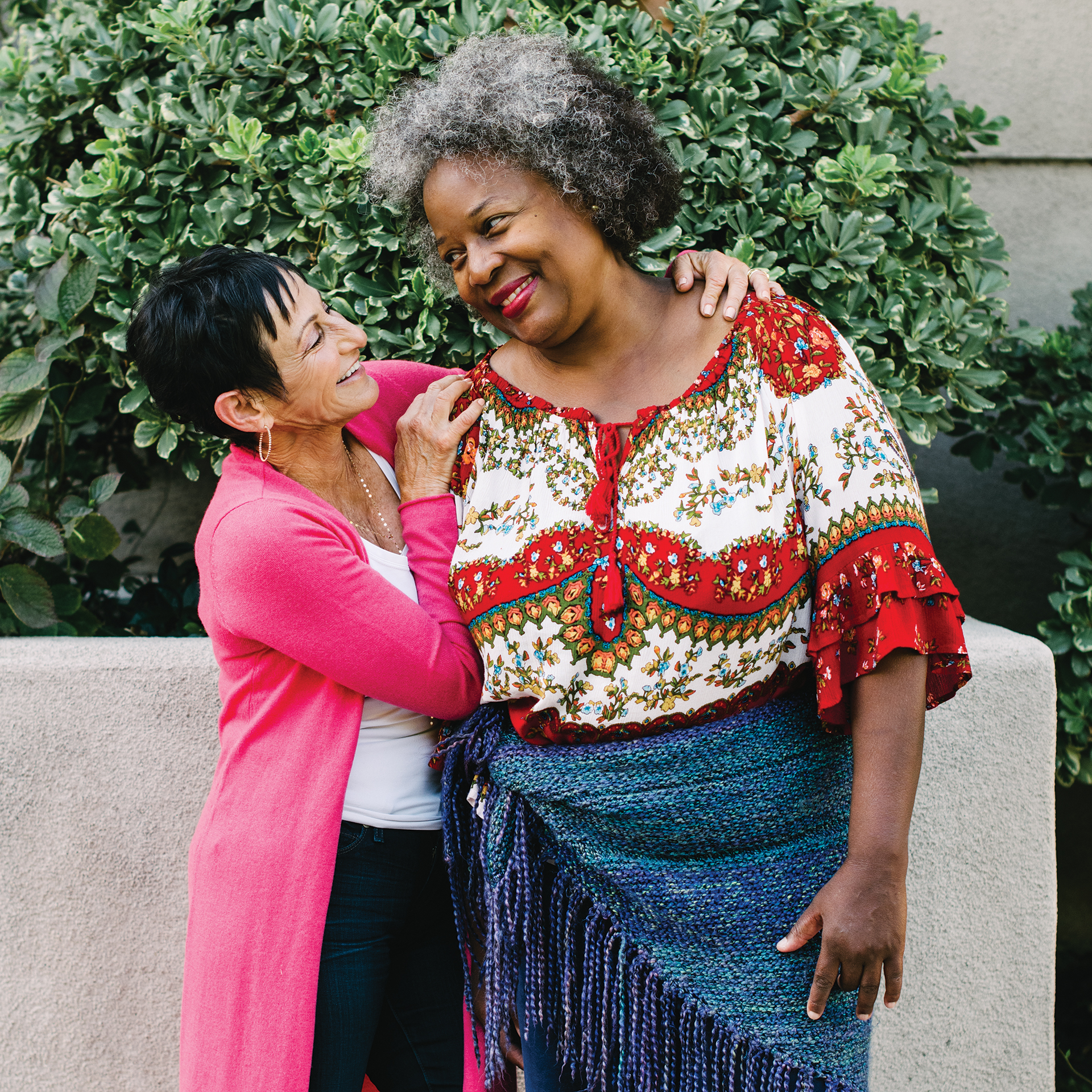
“I met Sage three months after her stroke,” notes speech-language pathologist and author of Hope After Stroke for Caregivers and Survivors, Tsgoyna Tanzman. “I was working for a company called Rehab Without Walls. As a therapist, our goal is to help you achieve the greatest level of independence and identify what’s most meaningful to you.”
Introducing yourself into someone’s home, into their life while they’re at their most vulnerable is a “sacred responsibility,” Tsgonya explains. Over time Tsgonya began to learn more and more about Sage’s life and slowly began reintroducing elements and places that were fundamental to who she was before her stroke. They headed to the farmers market, the library—even a location as tedious as the DMV was filled with stimulating visuals and sounds.
“We started little by little; these outings are intense,” Tsgonya points out. And each excursion was in addition to doctor appointments and dialysis three times a week.
“If I had my way, I wouldn’t have walked or talked or anything,” Sage says. Every outing required immense effort—it would have been easier for Sage to shut out the world, but she didn’t. Over time she began to do more and more, including things she had never done before.
Sage never knew how to swim prior to her stroke, but during her recovery she developed a strong desire to be in the water. Taking it one step at a time, she started going to a local pool, where someone anonymously purchased her first swim lessons. Now Sage swims for more than an hour every day.
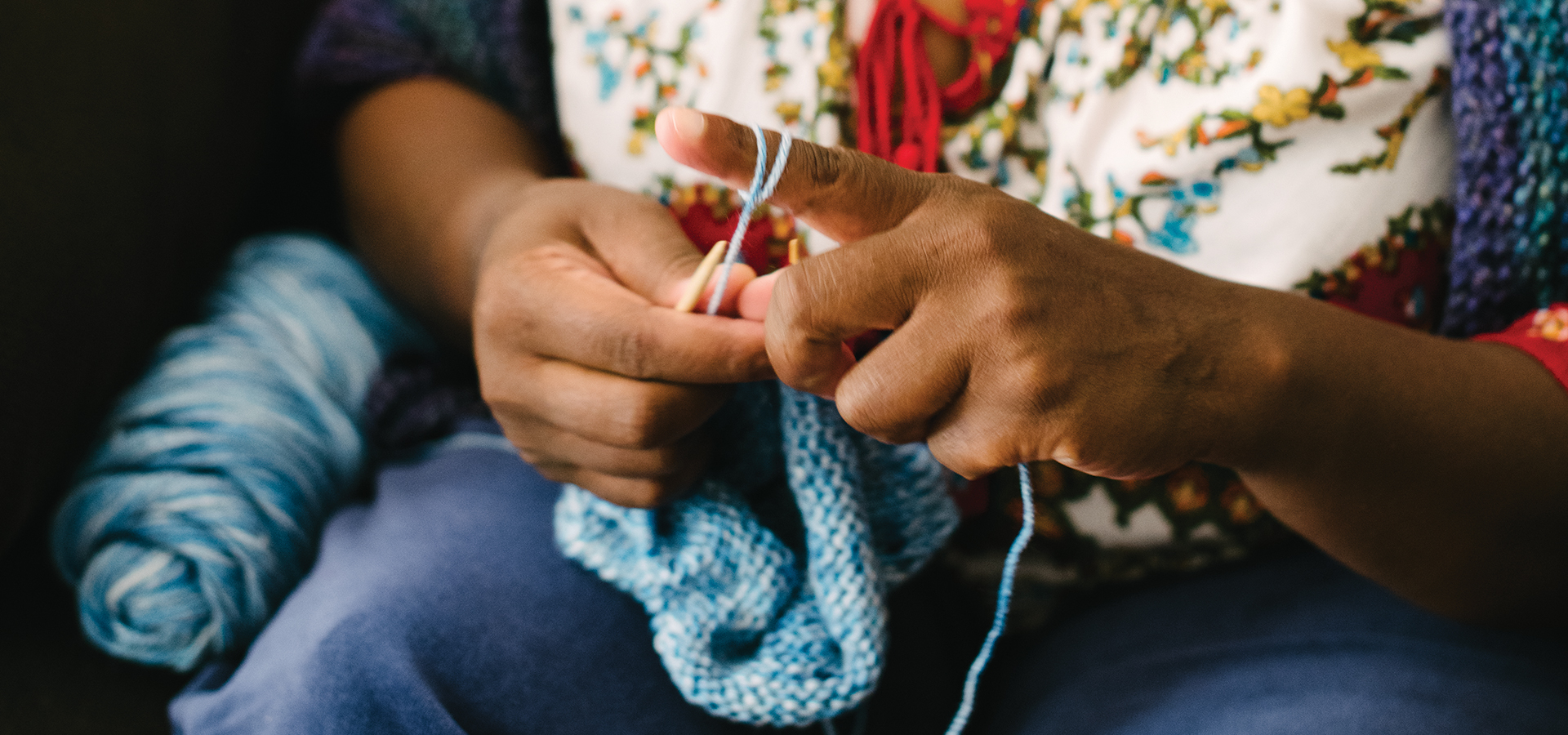
“I feel like superwoman in the pool,” she says. “Just sitting down is exhausting, but when I’m in the water, I feel like I could do anything.”
The evolution of Sage’s recovery has been remarkable. With fierce determination she has fought to take back everything she lost after her stroke.
“I’m training my body to go past what it can do. Knowing that, next year I’ll be even stronger than I am now. You still have moments of feeling helpless, but you have to keep going.”
There is one thing, however, she was ready to release: the infinite pain of losing her child. “I lost my daughter, Audrey, in 2000. The pain every day … I was like the walking dead. When your child dies, everything in the universe stops. The earth stops rotating, and you get off. When you get off, the world keeps turning, life is still happening, but you’re just spectating,” Sage says.
With a son and daughter to care for, Sage buried her pain. “It was important to me to at least look strong,” she notes. But it wouldn’t be until after her stroke that she was able to move forward. “The stroke became my greatest gift; it took the memory of the pain,” she shares.
“Sage is a fantastic example of the potential for recovery and growth,” Tsgoyna says. And while every path to recovery is unique, it’s important to never give up hope.
“Every brain is different, vastly different,” Tsgonya says. “Most doctors will say at a certain point—typically six months to a year after a stroke—that it’s as good as it’s going to get … and that’s not true. Recovery can continue as long as you continue to stimulate the brain; that’s the basis of neuroplasticity. The only time you stop improving is when you stop stimulating your brain.”
And Sage is showing no signs of stopping. “I’m training my body to go past what it can do,” Sage says. “Knowing that, next year I’ll be even stronger than I am now. You still have moments of feeling helpless, but you have to keep going.”






